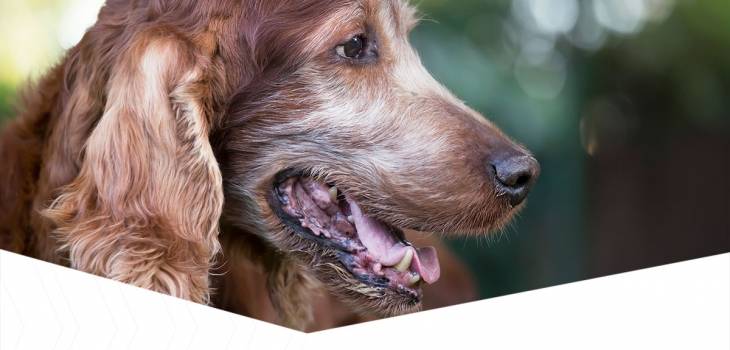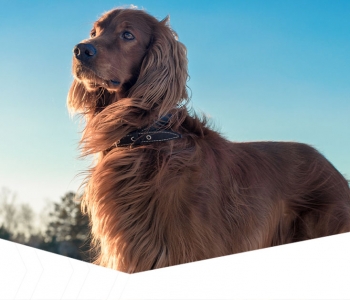
Signs to look for in ageing dogs – healthy…
Hopefully it is not too much of a presumptive statement to make by saying that people with older dogs want them to live as long a life as they possibly can but in a healthy manner. If you have an older dog at home you be interested in two surveys of UK pedigree dogs which have been carried out in the last decade looking at Pedigree Breed Health. The aim of collecting this data was to look at the causes of death & prevalence of conditions affecting the current population of Pedigree dogs, and the results are quite surprising:
- A paper-based survey in 2004 sent out to breed club secretaries for distribution to their breed club members gaining information on 36,006 dogs.
- An online survey in 2014 that was directed at owners of all Kennel Club registered dogs over the past 10 years promoted to the general dog owning public which generated data on 43,207 dogs.
Here we talk about the results of the surveys as well as top 10 health checks you can complete at home to help keep your dog(s) healthy for longer.
Survey results:
Interestingly the median age at death for 15,881 deaths in 165 breeds from 1994 to 2003 was 11.25 years. However, the median age at death for 5,684 deaths in 178 breeds was 10 years. How and why has this drop in average age at death occurred?
The most common cause of death/reason for euthanasia of dogs in the 2004 Kennel Club Purebred Dog Health Survey was cancer, accounting for 27% (4282/15881 dogs) of reported deaths from 1994 to 2003 (Adams et al., 2010). In the 2014 survey report, the 20 most common causes of death are reported. If one adds up the various categories of cancer deaths, then at least 27% of these dogs died due to cancer, making it the most common cause of death. One life limiting disease not mentioned in the KC surveys is obesity. We know that obesity in pets is on the increase and we also know that it is a life threatening and insidious disease. In contrast almost 90% of the 39 Eukanuba Longevity Labradors lived beyond the breed typical 12 years expected lifespan. What is key is that these 39 Labradors were all in optimal body condition. None of them were overweight and this is undoubtedly part of the reason for their longevity.
So the key message if you have older dogs – keep them nice and lean.
Health checks:
You may well be looking for obvious signs of ageing, perhaps you’re worried about health problems which occur much more commonly with age, such as cancer, or even thinking about the dreaded day that you have to say goodbye to your old friend. Rather than worrying take action. While it is highly recommended to take older dogs for full senior health checks at your local veterinary practice it is also clear that many owners don’t do this. In fact according to the American Animal Hospital Association (AAHA) less than 14% of senior companion animals undergo regular health screening. Perhaps you are one of the remaining 86% of owners avoiding routine health checks. While we highly recommend you take your older dogs for veterinary check-ups there are some checks you can do at home and as an experienced breeder/dog owner/show handler you are in a unique position where noticing subtle changes in your dog’s daily routine may be easier than it would be for standard dog owners.
Areas to check:
Here is a quick list of 10 things you can check at home, but do note this is intended as a starting point for discussion with your vet, he or she will then be able to diagnose any changes.
- Eyes: Problems with eyesight increase with age and a number of systematic diseases such as diabetes mellitus and hyperthyroidism can cause eye issues. Your dog’s eyesight can be checked quite easily by simply using some cotton wool!Dropping it from a height in view of your dog most dogs will generally catch sight of it as it falls.The menace response can be tested by holding your dog’s head with one hand and using the other hand to quickly (but carefully) move towards the eye, this will confirm if your dog can see objects coming towards them as they will blink in response.You can also place objects on the floor and then encourage your dog to move around them.
- Ears: A loud clap can be made away from the dog. They should react to the sound by twitching their ears or turning their head in the direction of the sound. You can also have a gentle look at the ear pinna (note do not look deep into the ear or put anything into the ear canal itself), to see if there are any signs of inflammation, redness or discharge. If you are worried you should take your dog to your vets so he/she can take closer look.
- Mouth: Dental disease is exceptionally common, especially in older dogs and can be a surprisingly frequent cause of anorexia. Check your dog’s mouths for signs of gingivitis (reddening of the gums), periodontal disease and even growths in the mouth.
- Neck: Run your hands down your dog’s neck to feel for any unusual lumps and bumps. You can also feel for any muscle wastage in this area, which can occur commonly in ageing dogs.
- Chest: Follow down to your dog’s chest such as any masses. Overweight dogs (remember excess weight can become more of a problem with age) can develop lipomas (benign fatty lumps) around this area.
- Abdomen: Palpating your dog’s tummy is really something to be done by your vet/vet nurse as they will be able to feel the size and shape of the liver and kidneys. What you can check for is the feel of the skin and fur to see if there is any evidence of thinning, hair loss, parasites (fleas) and once again any masses.
- Bottoms up: As horrible as it sounds your dog’s bottom should be checked for any presence of faeces.
- Genitalia: Whilst in the bottom area take a quick look at the more delicate private region. Remember if your dog is still entire the chance of any age related diseases such as pyometra (pus filled uterus), mammary or testicular cancer should be considered and potentially a discussion about neutering your dog should be had with your vet.
- Body Condition Scoring: This is so very important and in fact should be something we do with our dogs throughout their entire lives and not just with age. Accurate weight checks and body condition score checks give us an opportunity to compare and contrast with previous checks. Living with dogs everyday mean that we may not notice insidious excess weight creeping on so taking a step back every once in a while to consciously check this can help notice any added centimetres.
- Limbs: Have a look to see if you notice any swelling or discomfort. This could be a sign of osteoarthritis which become more evident as time passes. Slowing down or reluctance to jump onto the sofa or into kennels is not a sign of age related decline but rather age related disease which could be treated. If you notice any soreness it is something we should most definitely discuss with our vets as this progressive disease can be cause incredibly debilitating pain.
After following these steps keep a note of any changes that you see and when you decide to take your older dog for a check-up you can refer to exact times, dates and places where these changes have occurred.





